MOTHER EARTH NEWS FAIR
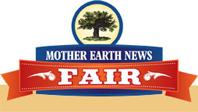 Visit us at Mother Earth News Fair
Visit us at Mother Earth News Fair
Premier's booth #1550 & 1502
Puyallup, WA
May 31-June 1, 2014
Premier's booth #151 & 153
Seven Springs, PA
September 12-14, 2014
Premier's booth #TBA
Topeka, KS
October 25-26, 2014
RECIPES
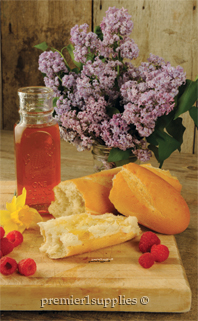 Honey Butter
Honey Butter
Honey butter is commonly served with cornbread, biscuits, muffins and pancakes, but it's good on virtually everything.
Just whisk together 4 parts room-temperature butter with 1 part honey. For a small batch, use a stick of butter (1/2 cup) and 2 tablespoons of honey.
Because the sweetness of honey can be highly variable, play with the ratios to find one that's to your liking. And for a more complex flavor, try adding a bit of vanilla extract or cinnamon.
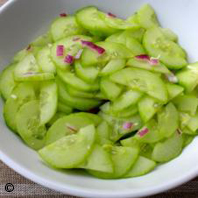
Photo and recipe courtesy of National Honey Board
Honey Cucumber Salad
Ingredients
| • |
3 medium cucumbers, thinly sliced and halved |
| • |
1/4 cup honey |
| • |
1/2 cup white balsamic vinegar (can also use white wine vinegar) |
| • |
1/4 cup water |
| • |
2 tablespoons red onion, diced |
| • |
salt |
Directions
Place cucumbers in bowl and sprinkle with salt. Toss and set aside. In a small mixing bowl, stir together honey, white balsamic vinegar, water and diced red onions. Pour the mixture over the cucumbers and toss. Allow the salad to marinate in the refrigerator about 1 hour prior to serving.
SIMPLE FENCE SOLUTIONS
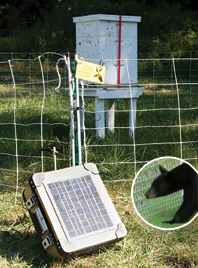
Protecting beehives from bears (inset photo courtesy of Quinn & Heather Metheny, PA) with ElectroNet® energized with a Premier PRS Solar Energizer. Photo from Beginning Beekeeping Video: Gardenfork.TV.
Electrified Netting Options
| • |
ElectroNet® 9/35/12 – To protect your beehives from bears and livestock. |
| • |
VersaNet® 9/20/3 – To protect your beehives from small predators such as opossums, skunks, raccoons and small dogs. Also excellent for protecting gardens. |
We also provide
"Plus" versions:
Plus nets have posts every 6.8 ft vs 11.5 ft for standard nets. Closer spacings mean less sag and make it easier to fence around curves and across uneven ground.
Energizer Options
Energizer Kits
Why purchase a kit?Users tell us that kits simplify their purchasing decisions—because electrified fences require energizers, ground rods, accessories, etc. And for those with minimal experience, it’s complicated to choose and buy multiple components and build fences.
You can also view our energizer comparison charts
|
 |
 |
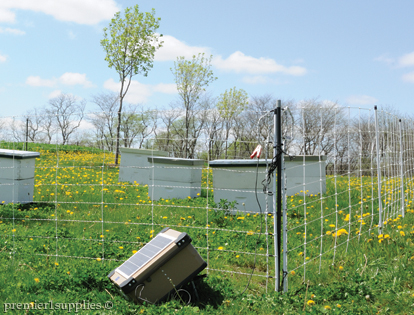
ElectroNet® Plus 9/35/12 energized with a PRS 50 Solar Energizer. Bees and beehives are a food source for bears and other critters so they need to be protected to prevent predation.
Iowa Honey
This morning I sweetened my coffee with a spoonful of honey. The result was simply sweet and delicious.
Honey has been on my mind since last week, after I visited with Tim Wilbanks of the Kalona Honey Company. Tim is a transplant from his home state of Georgia, where he grew up on his family's apiary. He helps out with the family apiary by hauling bees between Iowa and Georgia making deliveries of packages. Bee packages are small 3-pound boxes of bees including a queen bee—a starter kit for beehives.
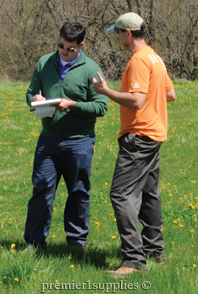
While I had Tim's attention, I asked him a few questions on beekeeping and honey.
|
Q. Trucking bees from Georgia to Iowa—are there acclimation issues?
A. Not really. When it's warm enough for bees in Iowa to start moving around, it's been that warm in Georgia for months. Keep in mind, if you are shipping bees to Iowa (or anywhere for that matter), shipping dates depend on the weather in Georgia. If it's warm and sunny in Iowa, but rainy and miserable in Georgia, the bee harvest might not occur and package deliveries will be delayed.
Also, when delivering bees, the truck needs to keep moving. Bees need air and ventilation. So when delivering bees, stop for deliveries and refueling, nothing else.
A major difference between Iowa and Georgia is the winters. Iowa winters are harsh. The 2013-2014 winter was especially harsh, and death loss hovered around 60-65%. That is 60-65% of the whole hives, not the population within the hives. Other areas fared worse (up to 80%), but the official reports have yet to come out.
Georgia on the other hand, has mild winters in comparison. A typical winter might result in 5% loss, and that's usually from predators (skunks and bears).
To help bees through the winter, either feed them more or leave more honey for them to consume. Their feed is a sugar syrup. Some folks use high fructose corn syrup.
Q: Cost of equipment?
A: Around $350-$400 for the hive and bees.
Q: Recommendations for getting started?
A: Talk to your local extension agency and beekeepers in the area to find classes and seminars on beekeeping. There are a lot of good books out there as well.
If you want to keep bees in town, check your local ordinances to make sure it's legal. Talk with your surrounding neighbors so they are aware of your hives.
Keep in mind that there are time demands. April through May involve checking the hives to make sure the populations are healthy. In June and July, check them once every week or two.
Harvest is in July and August—and it's time-consuming. Some maintenance is needed going into fall. After October the bees are on their own.
Q: What predators are a concern?
A: Bears and skunks. In the South and areas with bears* you'll see electric fences around the hives. Skunks** are bee predators too. During the winter, skunks will scratch at the side of the hive until groggy bees walk out, then they just pick them up and eat them.
Sometimes the two-legged kind will relocate the hives.
Q: What are some disease concerns?
A: Varroa mites. They're an external blood-sucking mite, like ticks for bees, feeding on larvae and adults.
Also foulbrood disease, American and European. Best to isolate a hive if this occurs.
Q: Recommended feed sources?
A: Sweet clover and alfalfa. Some soybeans also make really good honey. And basswood and black locust trees. All have a distinct color, clarity and flavor.
Dandelions have lots of pollen (protein), good for baby bees. It primes the pump and builds up the hive.
By Joe Putnam, Premier Research Writer
* For areas with bears, Premier recommends ElectroNet®.
** For protection from skunks, Premier recommends VersaNet®.
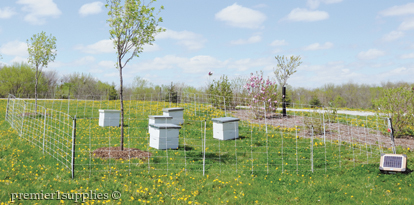
A small hive set up at the Kalona Honey Company. Notice all the dandelions? Dandelions are some of the earliest blooming flowers in spring, and their pollen serves to give bees the jump start they need for the honey-making season ahead.
BEEKEEPING EXTENSION NEWS
Beekeeping
Penn State, College of Agricultural Sciences, Agricultural Research and Cooperative Extension
Honey bees produce or collect a variety of products that benefit people. These products include honey, beeswax, pollen, royal jelly, and propolis. Although honey bees can be managed to produce large quantities of these products, they are especially valued for the major role they play in pollination. While other insects and animals also are pollinators, people have had little control over the actions or numbers of these pollinators. Honey bees’ colonies, however can be placed wherever and whenever they are needed. Also, honey bees have additional advantages over other pollinators, such as their availability in large numbers and their instinctive pollen-hoarding behavior. Without the pollinating service of honey bees, the cost of many fruits, vegetables, legumes, and seeds would be many times what it is today.
Although the figures vary widely depending on the source, about 150,000 beekeepers own approximately 3 million colonies of honey bees in the United States. These beekeepers make their living in several ways. Many beekeepers move their colonies several times during the season to produce a variety of honey crops or to pollinate various crops for a fee (apples, peaches, blueberries, or strawberries, for instance). Other beekeepers sell equipment, nucleus colonies, and package bees, or rear and sell queens as a source of income. A few individuals are strictly buyers and packers of honey.
READ MORE »
HELP SAVE BEES
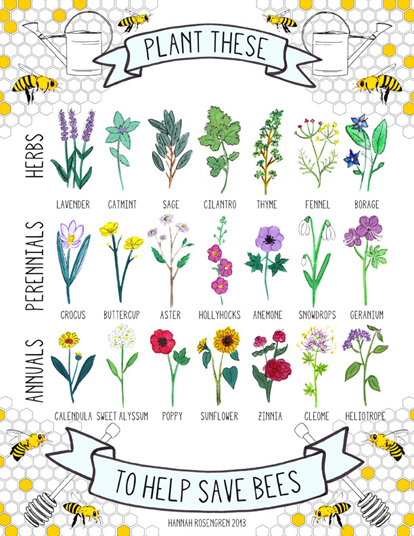 See this and other illustrations by Hannah Rosengren
See this and other illustrations by Hannah Rosengren
|
|